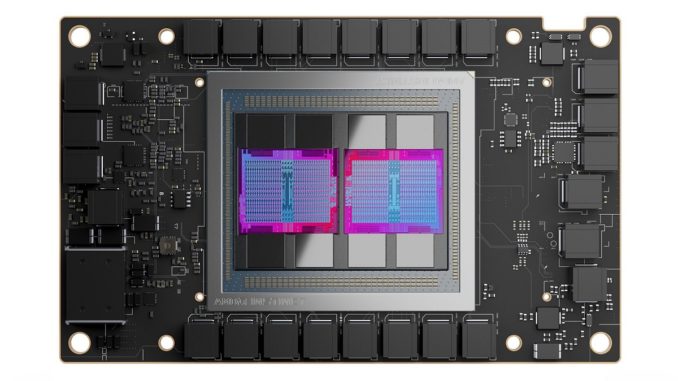AMD's new compute GPU gives us a glimpse at what next-gen Radeon gaming cards could look like
This thing is a monster.

AMD has announced its Instinct MI200 series HPC GPU. It’s designed for high performance applications but it packs in some eye watering tech that could give us a glimpse into what future RDNA 3 cards could look like. Straight up, this GPU is a monster.
The MI200 is designed for compute tasks. It's based on the CDNA 2 architecture and it packs in some specifications that, if it were released as a gaming GPU today, would certainly put all other cards to shame.
It’s the first ever multi-chip-module (MCM) GPU, or chiplet type design. It packs in up to 14,080 processors and 128GB of HBM2e memory, offering up to 3.2 TB/s of bandwidth. Compare that to a Radeon RX 6900 XT with its 5120 processors, 16GB of GDDR6 and 512GB/s of bandwidth. It sounds like the MI200 would make a nice 8K gaming card!
Information such as TDP wasn’t revealed, however, with specs like this, we’d be surprised if these devices ran at less than 500W each.
Pricing is also unknown, and its possible that such cards might not reach retail, but if we had to guess, you could probably buy ten Nvidia RTX 3090s for the price of one MI250X!

Black Friday 2021 deals: the place to go for the all the best early Black Friday bargains.
The MI250X accelerator is set to power the Frontier Supercomputer at the Oak Ridge National Laboratory. When it’s brought online later this year, it will become one of the most powerful supercomputers in the world and also one of the most power efficient per flop.
Though tech like this is amazing, there are rumors that next gen RDNA 3 and Nvidia’s Ada Lovelace GPUs could push 500W or more. Is that why next-gen PSU are carrying those absurdly high spec 12-pin cables? Whatever the case, tech like this gives us a tantalizing glimpse into AMD future GPU designs.
Keep up to date with the most important stories and the best deals, as picked by the PC Gamer team.

Chris' gaming experiences go back to the mid-nineties when he conned his parents into buying an 'educational PC' that was conveniently overpowered to play Doom and Tie Fighter. He developed a love of extreme overclocking that destroyed his savings despite the cheaper hardware on offer via his job at a PC store. To afford more LN2 he began moonlighting as a reviewer for VR-Zone before jumping the fence to work for MSI Australia. Since then, he's gone back to journalism, enthusiastically reviewing the latest and greatest components for PC & Tech Authority, PC Powerplay and currently Australian Personal Computer magazine and PC Gamer. Chris still puts far too many hours into Borderlands 3, always striving to become a more efficient killer.

